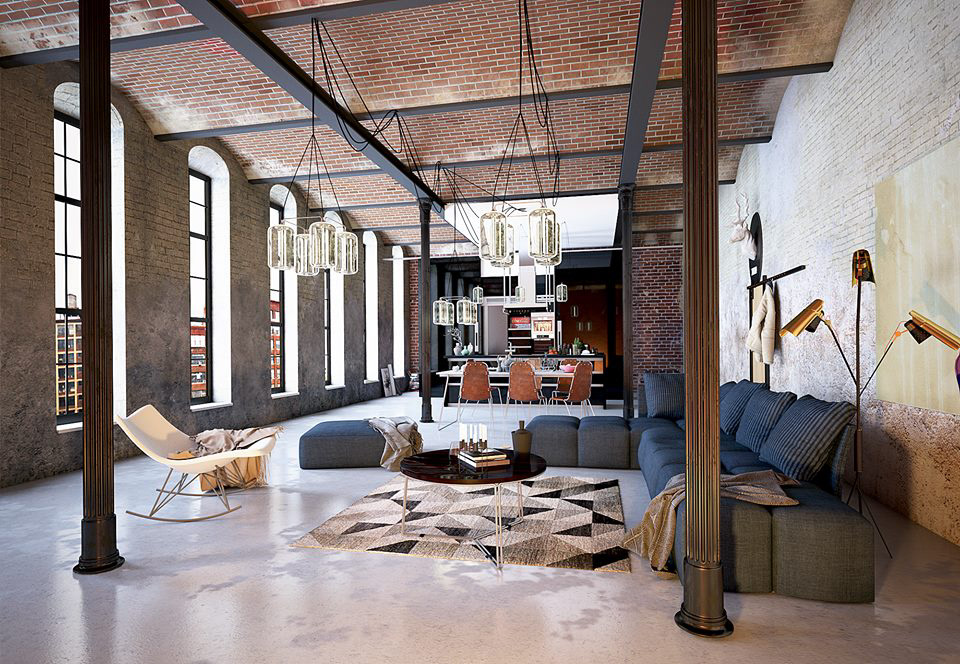Incorporating a small element of nature can fill your loft with brilliant, natural colors. Adding a miniature garden is a great way to create a unique atmosphere in a modern space.
However, if your loft doesn’t get much sunlight, and if the air is dry and cold, it might put an end to your tropical garden dream; moisture-loving and thermophilic plants cannot survive in these conditions. Therefore, a florarium is a great option for those who want to grow exotic plants with minimal maintenance.
It’s fun and surprisingly simple to make your own florarium, and it’s just as simple to maintain it as a zkittlez strain in the UK. In any environment, a florarium will thrive with a little indirect light and a spritz of water.
In this article, we will discuss in detail what a florarium is and how to plant one in your loft effectively.
What Is a Florarium?
A plant terrarium or florarium is a tiny container in which plants can grow and develop. It’s almost like your own mini-garden. Creating it out of glass or dense translucent plastic is preferable to making it out of wood. Florariums are typically designed to have a tighter entrance at the top or side so that the microclimate inside is maintained. A lid is often used to completely cover the opening.
One of the most notable advantages of florariums is their compactness, which is especially beneficial for tiny lofts. The terrarium’s variety of plants is striking and distinctive, especially when compared to normal potted plants.
Steps for Installing a Florarium
Follow the below steps to create and install a florarium.
Gather the Necessary Materials
To make your own florarium, you’ll need the following materials:
- A glass jar with or without a lid (aquarium, vase, jar)
- Soil that is suited to the needs of the chosen plants
- Drainage (sand, small pebbles, expanded clay, broken brick)
- Activated charcoal
- Succulents and other low-maintenance plants
- Small stones or shells can be used as decorative components.
- Tools (spatula or spoon, long tweezers, sprayer, watering can, scissors)

Prepare the Materials
To begin with, clean the container thoroughly. Then, gather small stones and place them on the ground. Small stones can be painted with poster paints to look like miniature mushrooms. After the paint has dried, apply a layer of transparent nail polish to keep it from washing off. If you’re going to work with soil and plants, remember to maintain cleanliness and safety in mind, especially if the greenery and dirt have come from a park or forest.
Prepare the Container
To prevent the glass from cracking, wash it well with hot water, but don’t let it boil. Add a drainage layer at the base of the container. Use your imagination when it comes to choosing the materials – it might be anything from expanded clay to gravel, from aquarium decor to seashells. Create a drainage layer that is 3-4 cm thick.
Cover the Drainage With Activated Charcoal
This is required to absorb toxic compounds from the water and prevent the growth of mold and mildew. In addition, purified water should be used to irrigate and mist the terrarium plants.
Cover It With a Layer of Damp Soil About 5-8 cm Thick
Rather than being used as a separate layer, crushed charcoal can be incorporated into the soil. Soil layers can be interspersed with thin layers of colored sand for ornamental purposes. Sieved sand should be utilized in desert plant compositions, and for tropical plants, a ready-made substrate is recommended.
Make Little Indentations for the Plants With a Spoon and Level the Soil
Plants should be carefully removed from their pots and cleaned at the roots. Plant them gently in the prepared paste with tweezers and a little water. Ensure that large leaves don’t come into contact with the container’s sides. Using a sprayer, lightly mist the planted plants. Pour water from a thin-nosed watering can if the soil isn’t wet enough. Decorate with some ornamental elements. That’s all! Your florarium is now complete.
How To Take Care of a Florarium?
Because of the climate established inside miniature gardens, they resemble greenhouses. You need to pay attention to each plant, as well as the whole composition. You should also keep an eye on the container’s cleanliness.
Here are the guidelines for maintaining green spaces:
- Irrigation: Florariums should be watered sparingly, with no excess moisture allowed. Surplus moisture will collect at the bottom of the container, causing root rot and killing off plants. Only moisten the soil if there is no condensation on the glass’s inner walls.
- Clipping: The plants will take up more and more room as they grow. However, due to the limited space, they will have to be trimmed and pinched. Remove any leaves that show signs of fungal or bacterial disease.
- Fertilizer: You need some if the leaves become yellow or dark. Mind you the dosage should be kept to a bare minimum. Excessive fertilizing causes faster growth and salt build-up in the soil.
What Is the Best Location for the Florarium?
The florarium will thrive best on the shaded side of a window sill as the sun’s direct rays harm it greatly. The temperature inside the container rises, causing natural processes to be disrupted. Succulent gardens are an exception. In areas with diffused bright light, flowering plants will thrive. If there isn’t a suitable location in the loft, artificial light can be used; otherwise, the flowers will stick to the glass and lose their beauty.
Conclusion
Creating a florarium is simple and even fun. It’s sure to impress your guests and bring new life to any modern loft. It’s a great way to experiment with tropical orchids and succulents, as well as mosses and cacti.






